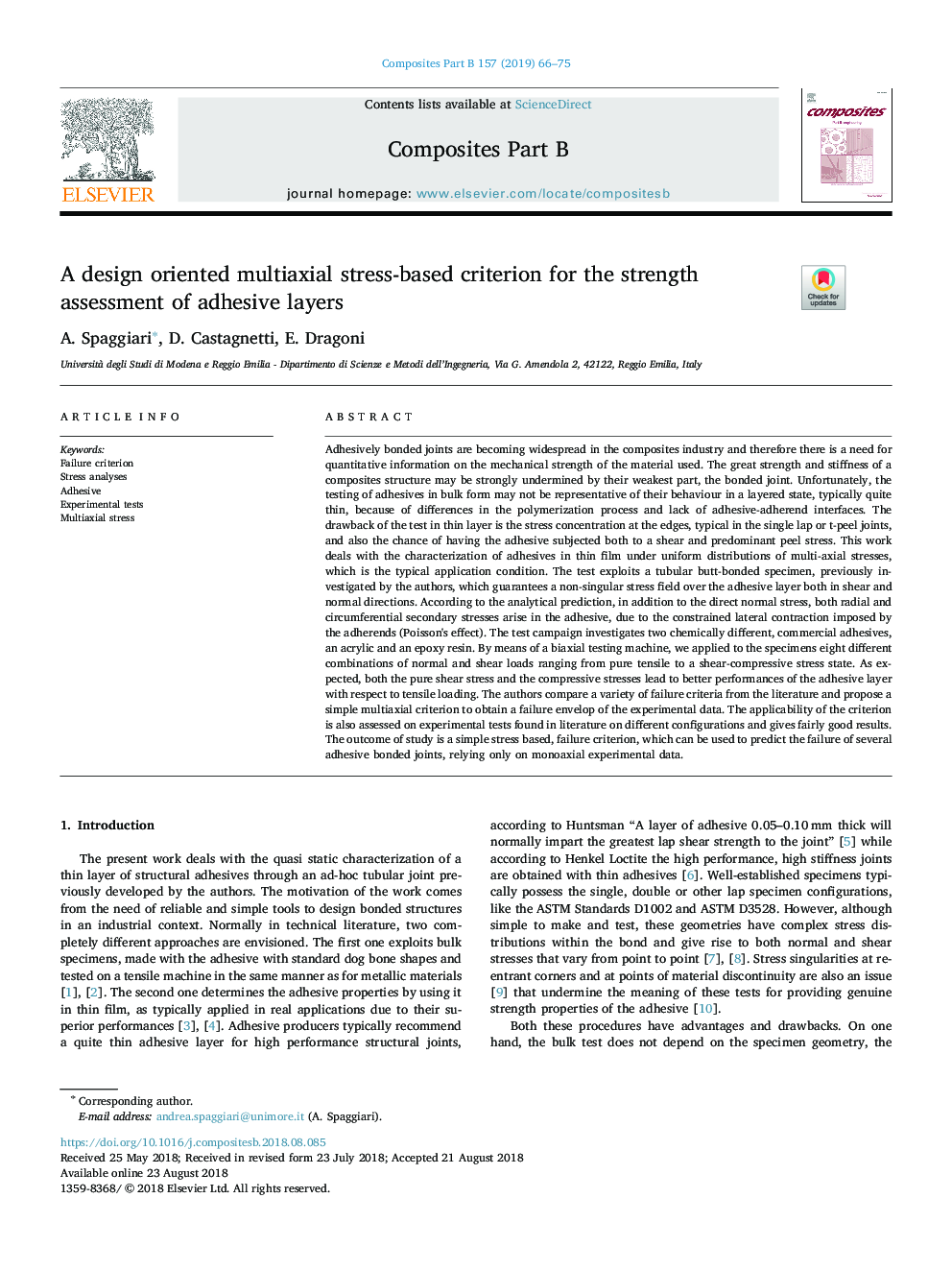| Article ID | Journal | Published Year | Pages | File Type |
|---|---|---|---|---|
| 8954476 | Composites Part B: Engineering | 2019 | 10 Pages |
Abstract
Adhesively bonded joints are becoming widespread in the composites industry and therefore there is a need for quantitative information on the mechanical strength of the material used. The great strength and stiffness of a composites structure may be strongly undermined by their weakest part, the bonded joint. Unfortunately, the testing of adhesives in bulk form may not be representative of their behaviour in a layered state, typically quite thin, because of differences in the polymerization process and lack of adhesive-adherend interfaces. The drawback of the test in thin layer is the stress concentration at the edges, typical in the single lap or t-peel joints, and also the chance of having the adhesive subjected both to a shear and predominant peel stress. This work deals with the characterization of adhesives in thin film under uniform distributions of multi-axial stresses, which is the typical application condition. The test exploits a tubular butt-bonded specimen, previously investigated by the authors, which guarantees a non-singular stress field over the adhesive layer both in shear and normal directions. According to the analytical prediction, in addition to the direct normal stress, both radial and circumferential secondary stresses arise in the adhesive, due to the constrained lateral contraction imposed by the adherends (Poisson's effect). The test campaign investigates two chemically different, commercial adhesives, an acrylic and an epoxy resin. By means of a biaxial testing machine, we applied to the specimens eight different combinations of normal and shear loads ranging from pure tensile to a shear-compressive stress state. As expected, both the pure shear stress and the compressive stresses lead to better performances of the adhesive layer with respect to tensile loading. The authors compare a variety of failure criteria from the literature and propose a simple multiaxial criterion to obtain a failure envelop of the experimental data. The applicability of the criterion is also assessed on experimental tests found in literature on different configurations and gives fairly good results. The outcome of study is a simple stress based, failure criterion, which can be used to predict the failure of several adhesive bonded joints, relying only on monoaxial experimental data.
Related Topics
Physical Sciences and Engineering
Engineering
Engineering (General)
Authors
A. Spaggiari, D. Castagnetti, E. Dragoni,
